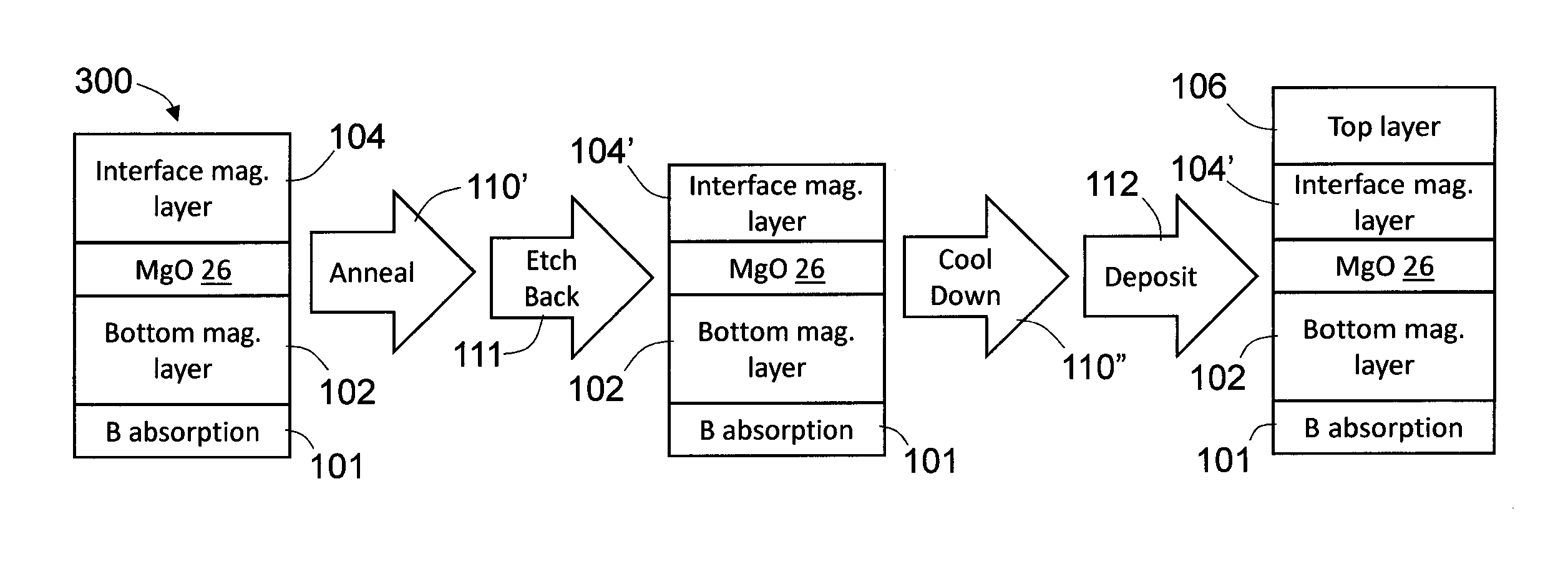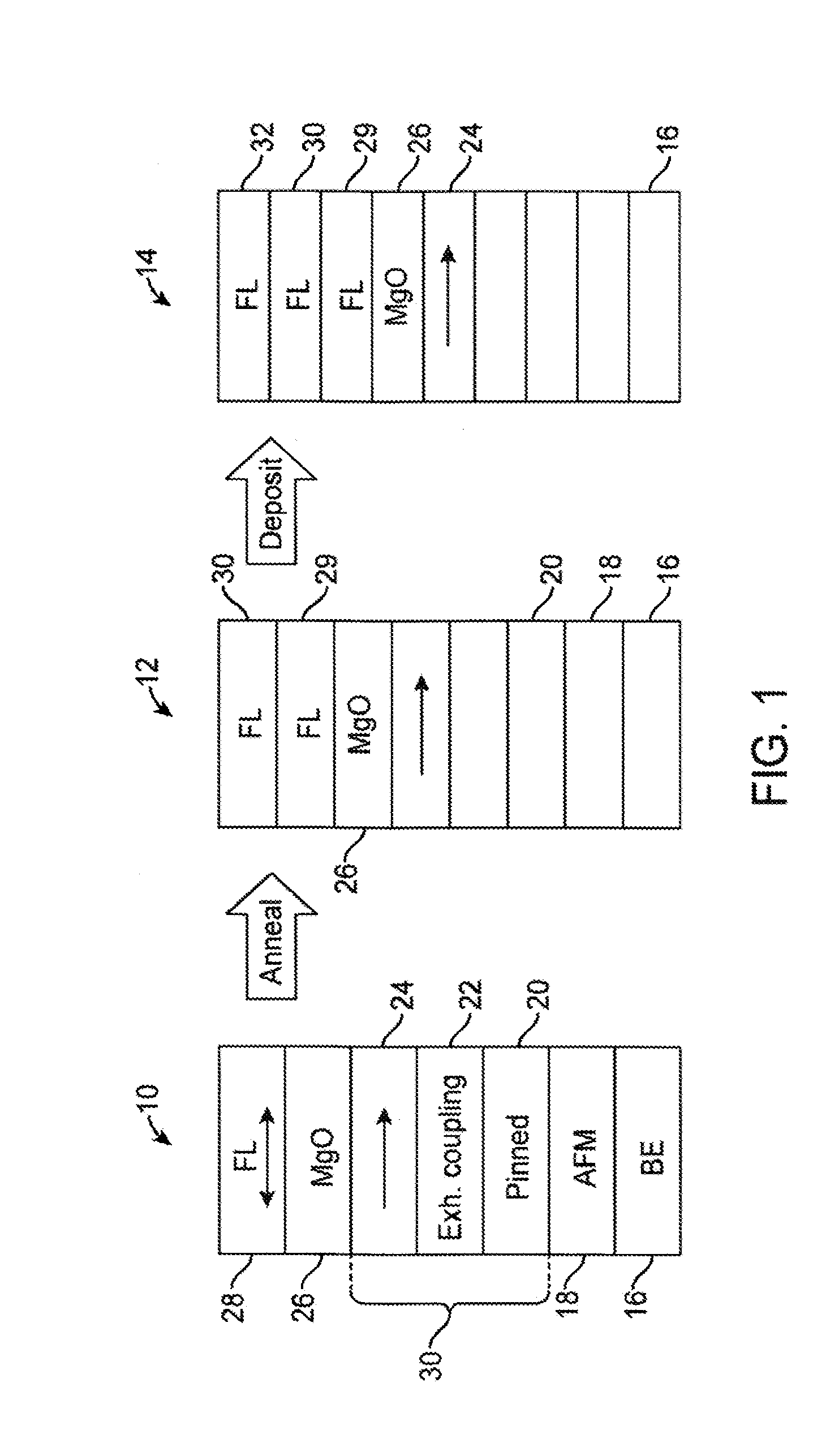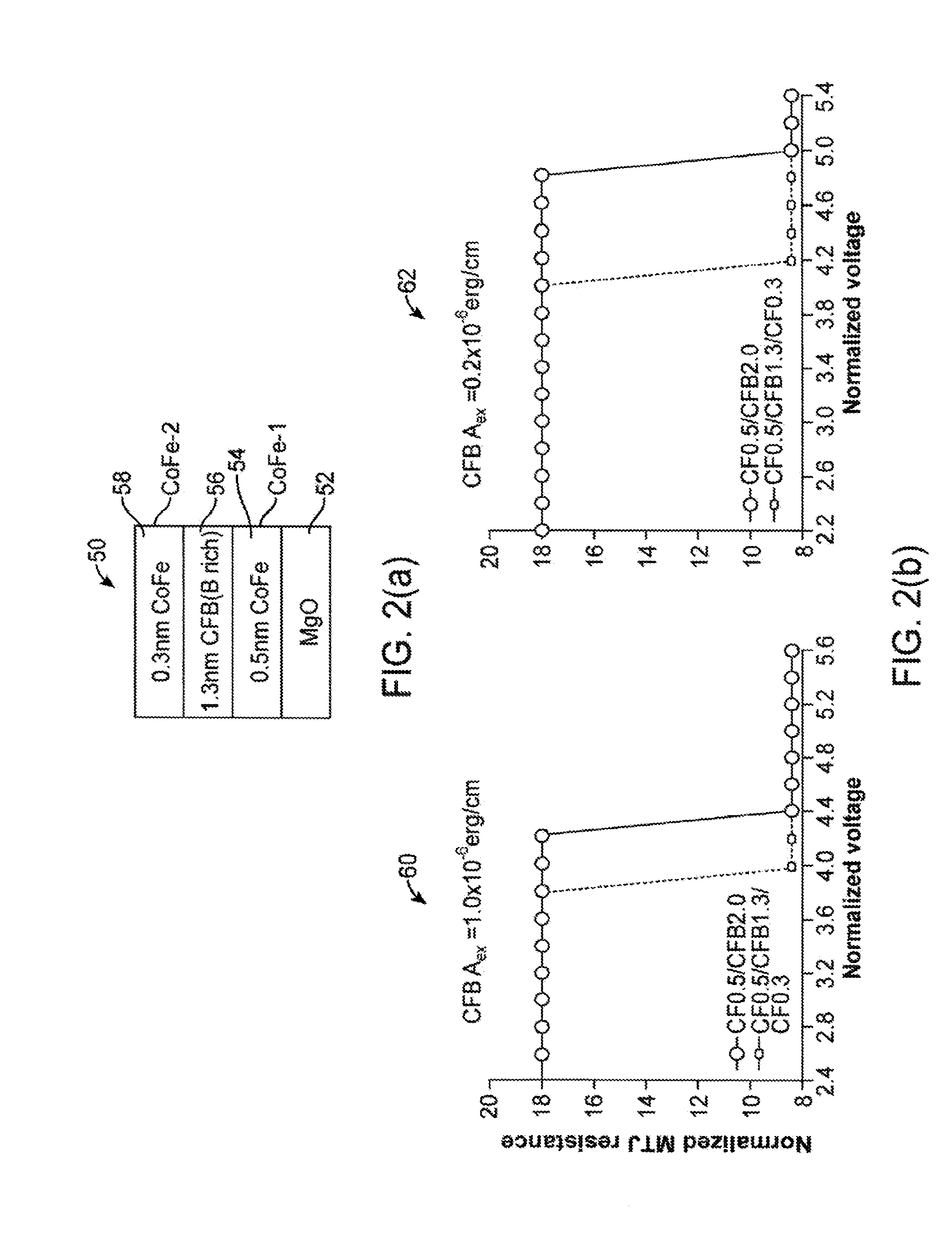Mtj manufacturing method utilizing in-situ annealing and etch back
a manufacturing method and in-situ annealing technology, applied in the field of magnetic memory elements, can solve the problems of preventing the advancement of the use of mtjs, the current and threshold voltage requirements are currently too high to allow practical applications of the spin transfer torque based mtj, and the mtjs exhibit a considerable low stiffness
- Summary
- Abstract
- Description
- Claims
- Application Information
AI Technical Summary
Benefits of technology
Problems solved by technology
Method used
Image
Examples
Embodiment Construction
[0019]In the following description of the embodiments, reference is made to the accompanying drawings that form a part hereof, and in which is shown by way of illustration of the specific embodiments in which the invention may be practiced. It is to be understood that other embodiments may be utilized because structural changes may be made without departing from the scope of the present invention. It should be noted that the figures discussed herein are not drawn to scale and thicknesses of lines are not indicative of actual sizes.
[0020]In an embodiment of the present invention, a spin transfer torque magnetic random access memory (STTMRAM) element and a method of manufacturing the same is disclosed. Relevant layers of the STTMRAM element include a free layer structure, having enhanced internal stiffness, and made of sub-layers using an annealing process. In forming the free layer structure, a first free layer is deposited on top of a barrier layer, the first free layer being made p...
PUM
 Login to View More
Login to View More Abstract
Description
Claims
Application Information
 Login to View More
Login to View More - R&D
- Intellectual Property
- Life Sciences
- Materials
- Tech Scout
- Unparalleled Data Quality
- Higher Quality Content
- 60% Fewer Hallucinations
Browse by: Latest US Patents, China's latest patents, Technical Efficacy Thesaurus, Application Domain, Technology Topic, Popular Technical Reports.
© 2025 PatSnap. All rights reserved.Legal|Privacy policy|Modern Slavery Act Transparency Statement|Sitemap|About US| Contact US: help@patsnap.com



